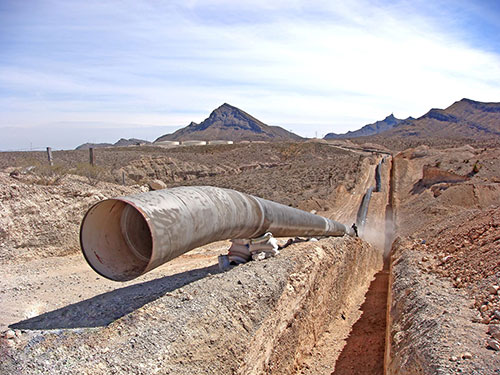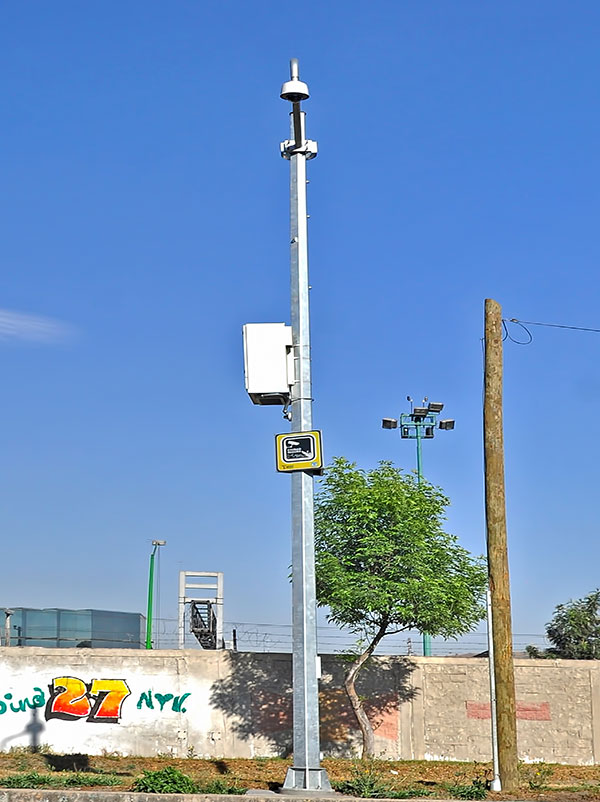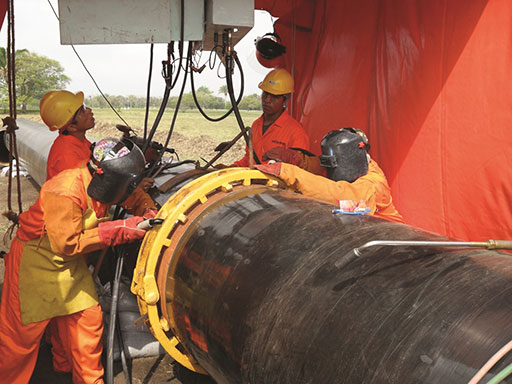The aqueduct serves the northwest zone of Ciudad Juarez. It has 23 wells, located in the desert, 25 kilometers of principal pipelines, storage tanks, and a repumping station. This is the first time that water from the Bolson de Mesilla aquifer has been utilized, and this allows the longer duration of the Bolson del Hueco aquifer, which has been the traditional water supply for the city.
Carso implemented highly specialized hydraulic engineering equipment for the project, such as the air chambers located at the beginning of the General Pipeline, as well as the installation of velocity variators for the operation of the five 500 HP motors located in the Repumping Plant.
It is ISO 9001-2008 certified, which accredits the aqueduct’s quality management system, and its construction and operational processes were also certified.
Magnitude
- Its wells cover an area of 100 km²
- The repumping plant covers 27,000 m²
- It has 76 km of pipelines
Its annual production could fill one million tanker trailers, which could form a continuous line 13,500 kilometers long, the distance between Ciudad Juarez and the South Pole.
The system produces 67,000 m3 of water – 1,000 liters of water per second for Ciudad Juarez.

In the first phase, seven thousand cameras (CCTV) were installed, mounted on metallic posts 9 meters high. In the second phase of the project, four thousand additional cameras were installed. In this second phase it was important to consider the use of posts made of galvanized steel, 20 meters high, for the monitoring of traffic, and 7.2 meters high for monitoring the Metrobus system of the Federal District.
In the second phase, panic buttons were installed in high-crime areas, as well as loudspeakers that were connected to the earthquake alert system.
The use of high-definition 4K video was made possible by the use of four thousand five hundred kilometers of fiber optic cable in 45% of the camera loops, for a better image quality in the C4 system.
The system has a total of eleven thousand cameras installed throughout the Federal District for surveillance of the urban area, and four hundred and fifty cameras for traffic control. These cameras have infra-red technology for nocturnal vision.

In 2010 and 2011 the Carso Pipelines sector built a pipeline for Pemex Exploration and Production for the transmission of sour gas, with a diameter of 36 inches, a thickness of 15/16″ and a length of 14.7 kilometers, which connects the Samaria II Battery located in Cunduacán, Tabasco, with the Cactus Gas Processing Complex located in the state of Chiapas.
The construction included the traps for the launching and reception of pigs, as well as the interconnection to the Samaria II and to the Cactus C.P.G. It also included a fire control system and a cathodic protection system.
The management of toxic residues was necessary during the construction, and Carso managed to conclude the project with zero accidents.
Three directional crossings were made, the longest of which was 1,750 meters long and 24 meters in depth, the longest that has been built in Mexico with that diameter of pipe.
Magnitude
- A line 14.7 km in length
- 36″ inches in diameter for the pipe

